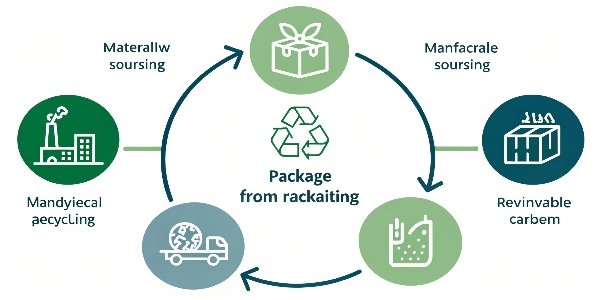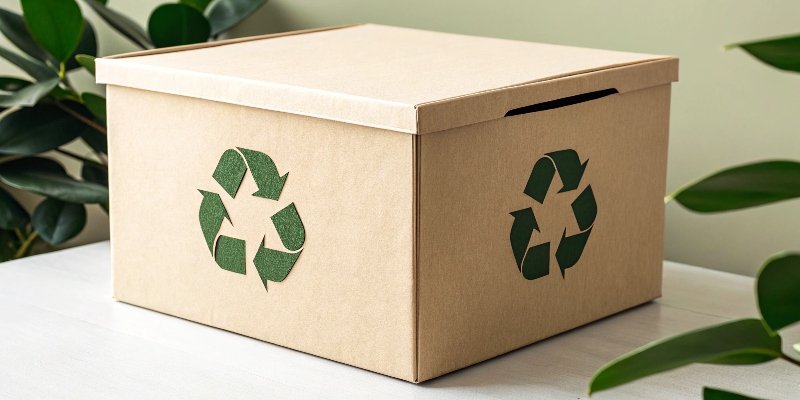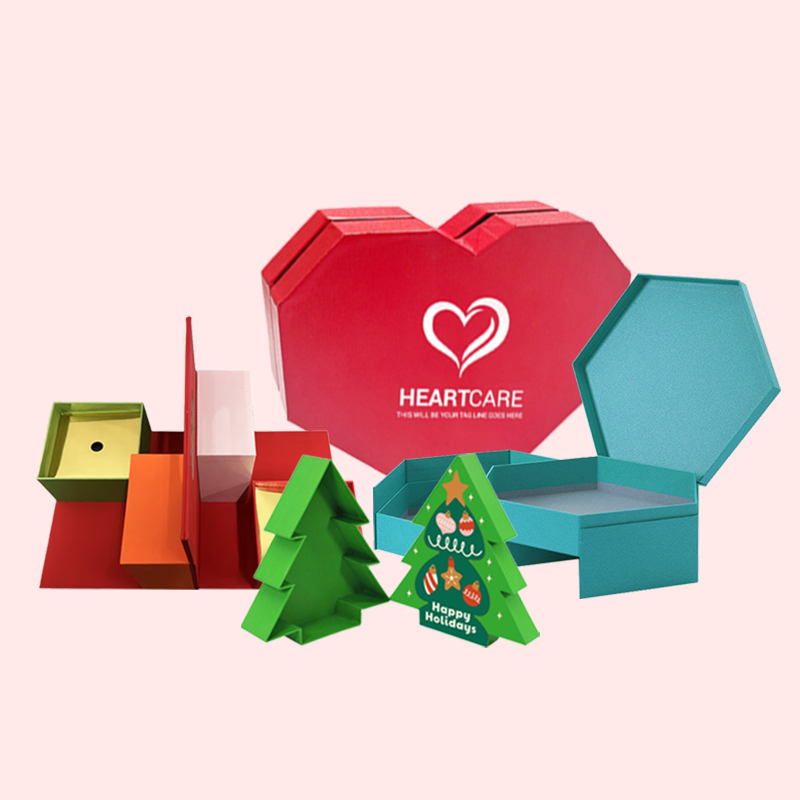Are you feeling pressured by the demand for eco-friendly products? Bad packaging choices can harm your brand. Understanding sustainable packaging is the key a business needs to grow.
Sustainable packaging is designed to be safe and healthy for individuals and communities throughout its life cycle. It is sourced, manufactured, transported, and recycled using renewable energy and meets market criteria for both performance and cost.

That's the big picture of what sustainable packaging is all about. But what does it really mean for your product, your brand, and your customers? The details are what separate true sustainability from simple "greenwashing1." We need to go beyond the surface and understand how these principles work in the real world of product design and manufacturing. Let’s dive deeper into the key questions you might have.
What is the meaning of sustainable packaging?
The term “sustainable packaging” is used everywhere. This can cause confusion and lead to wrong choices. Let’s look at its real meaning to help you make better decisions.
The meaning of sustainable packaging goes beyond being just "green." It refers to a whole-system approach that considers the environmental, social, and economic impacts of packing from its creation to its disposal, aiming for a circular system2.

In my 16 years in the packaging industry, I've seen the idea of sustainability evolve. It's not just about using recycled paper. It's about a complete mindset shift that considers the entire life of the package. As a designer, you are at the center of this. The meaning of sustainability is best understood through its three core pillars3, which you have to balance in every project.
| Pillar | Focus | What it means for you |
|---|---|---|
| Environmental | Minimizing harm to the planet. | This involves using materials from renewable or recycled sources, designing for minimal waste (lightweighting4), and ensuring the package can be easily recycled or composted after use. |
| Economic | Being financially viable. | Sustainable packaging must still be affordable. It must protect the product effectively to prevent costly damage and be efficient to produce and transport. A "green" solution that is too expensive to work is not sustainable. |
| Social | Being safe and fair for people. | This means the packaging is non-toxic and safe for consumers. It also includes the ethical sourcing of raw materials, ensuring fair labor practices in the supply chain. |
Thinking about these three pillars helps you move from just choosing a "green material" to designing a truly responsible packaging solution that works from every angle.
What is the most sustainable packaging?
You want to find the perfect eco-friendly option for your product. But choosing the wrong one can be more wasteful than you think. The solution is not one material, but a smart approach.
There is no single "most" sustainable packaging material. The best choice always depends on the specific product, its supply chain, and the recycling systems available to the end consumer. It’s about matching the right material to the specific job.

Clients often ask me, "Jason, what's the number one most eco-friendly material?" My answer is always the same: it depends. I once worked with a skincare brand that wanted to switch from lightweight recycled plastic bottles to glass jars to appear more "premium" and "eco." On the surface, it seems like a good move. But I had to walk them through the full picture. The glass was much heavier, which would have doubled their carbon footprint from shipping alone. It also required more protective packaging to prevent breakage. We decided that improving their current bottle by using more post-consumer recycled (PCR) plastic5 was the genuinely more sustainable option for their specific business. This story shows why we must look past simple assumptions and analyze the entire life cycle.
Here is a quick breakdown to help you think through the options:
| Material | Key Strengths | Key Weaknesses |
|---|---|---|
| Paper & Cardboard | Renewable, biodegradable, high recycling rates. | Not durable for wet products, can be bulky. |
| Glass | Infinitely recyclable, looks premium, chemically inert. | Heavy, fragile, energy-intensive to produce and ship. |
| Plastics (Recycled) | Lightweight, durable, great product protection. | Derived from fossil fuels, recycling can be complex. |
| Bioplastics (PLA) | Made from plants, commercially compostable. | Cannot be recycled, requires special disposal facilities. |
The most sustainable choice is the one that protects the product effectively with the lowest overall environmental impact from start to finish.
What makes a package sustainable?
It can be hard to know if a package is truly sustainable. You might be choosing options that only look green on the surface. To make a real impact, you have to know what to look for.
A package becomes sustainable when its entire life cycle is considered. This means using recycled or renewable materials, designing to minimize waste, making it easy to reuse or recycle, and having a low carbon footprint in production.

When I work with designers, I always tell them their power is at the very beginning of the process. The choices you make on the drawing board determine if a package will end its life in a landfill or as a useful new material. True sustainability is built right into the design. It's not something you add at the end. To make it simple, I often think about a few key characteristics that you can build into your projects. These are the practical steps that give packaging its sustainable credentials.
The Real Checklist for Sustainability
- Sourced Responsibly: Is the main material from recycled content? If it's virgin paper, is it certified by a body like the Forest Stewardship Council (FSC)6? This proves it comes from a responsibly managed forest.
- Designed for Less: Did you use the least amount of material possible? This is called "lightweighting4," and it reduces waste and shipping emissions. A smart structure can be strong without being bulky.
- Clean Production: Was the package made using clean energy7? Are the inks non-toxic and vegetable-based? The manufacturing process is a big part of the package's total footprint.
- Ready for a Second Life: Is the package designed for easy recycling? This means using a single material (a monomaterial8) where possible and avoiding glues or finishes that contaminate the recycling stream. Or even better, can the customer easily reuse it for something else?
A package that ticks these boxes is on its way to being truly sustainable.
How do you know if packaging is sustainable?
Many brands claim their packaging is eco-friendly. It is hard to tell what is real and what is just marketing. The best way is to look for credible proof and clear information.
You can identify sustainable packaging by looking for official, third-party certifications9 like FSC for paper or BPI for compostable items. Also, check for clear labels that state the percentage of recycled content and provide simple recycling instructions.

In this industry, I have seen a lot of "greenwashing1." This is when a company makes vague claims to look environmentally friendly without any real proof. Words like "eco-friendly," "earth-friendly," or "green" on a package mean almost nothing by themselves. As a professional designer, you need to look past these marketing terms and ask for real evidence. This protects you and your clients. The best way to do this is to look for logos from trusted, independent organizations that have verified the material or process. Your suppliers should be able to provide these certificates for you.
Here are some of the most common and trustworthy certifications to look for:
| Certification | What It Means | Why It Matters |
|---|---|---|
| FSC (Forest Stewardship Council) | Guarantees that paper or wood comes from responsibly managed forests that protect biodiversity and local communities. | This is the gold standard for ethical paper sourcing. It ensures you are not contributing to deforestation. |
| BPI (Biodegradable Products Institute)10 | Certifies that a material is compostable in a commercial composting facility. | This is crucial for bioplastics. Without this logo, a "compostable" claim is not verified and may be false. |
| Recycled Content Symbol11 | Often shows the percentage of recycled material used, distinguishing between pre- and post-consumer waste12. | This provides clear, honest data about the material's origin. "Post-consumer" is generally better as it diverts waste from landfills. |
When in doubt, always ask your packaging partner for documentation. A transparent supplier will be happy to share this information and help you make a choice that is genuinely sustainable.
Conclusion
Sustainable packaging is a continuous process of improvement. It requires smart choices that balance product protection, cost, and the health of our planet across the entire packaging life cycle.
-
Learning to spot and avoid greenwashing protects your brand and ensures your sustainability claims are genuine. ↩ ↩
-
A circular system reduces waste and maximizes resource use—key for long-term sustainability and cost savings. ↩
-
Balancing these pillars is essential for creating packaging that is truly sustainable from every angle. ↩
-
Lightweighting reduces material use and shipping emissions, making your packaging more eco-friendly and cost-effective. ↩ ↩
-
PCR plastic helps divert waste from landfills and reduces your carbon footprint, making your packaging more sustainable. ↩
-
FSC certification ensures your paper or wood packaging is sourced responsibly, protecting forests and communities. ↩
-
Clean energy reduces the carbon footprint of your packaging, supporting your brand's environmental goals. ↩
-
Monomaterial designs simplify recycling and reduce contamination, making your packaging more sustainable. ↩
-
Certifications provide credible proof of sustainability, helping you avoid greenwashing and build trust. ↩
-
BPI certification verifies compostability, ensuring your bioplastic packaging meets real environmental standards. ↩
-
This symbol shows the percentage of recycled material, helping you make informed, eco-friendly choices. ↩
-
Understanding this difference helps you choose materials that have a greater positive impact on the environment. ↩






